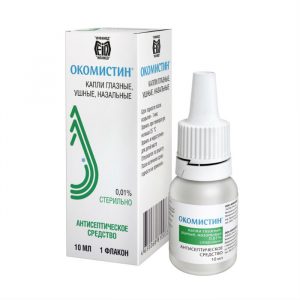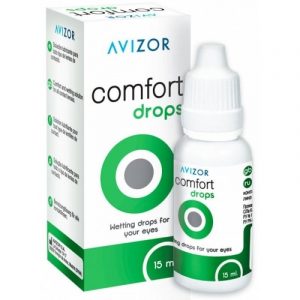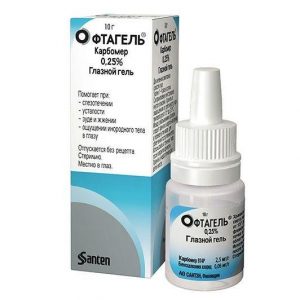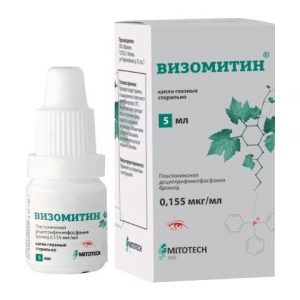Description
Latin name
XALATAN
Release form
Xalatan. Eye drops.
packaging 2. 5 ml – polyethylene dropper bottle (1) – packs of cardboard with the control of the first opening.
Pharmacological action of
The anti-glaucoma drug, an analogue of prostaglandin F2 , is a selective agonist of FP receptors (prostaglandin F) and reduces intraocular pressure (IOP) by increasing the outflow of aqueous humor, mainly through the uveoscleral pathway, as well as through the trabecular network.
Installed, that latanoprost does not have a significant effect on the production of aqueous humor and on the hematophthalmic barrier.
When used in therapeutic doses, latanoprost does not have a significant pharmacological effect on the cardiovascular and respiratory systems.
IOP reduction begins approximately 3-4 hours after drug administration, the maximum effect is observed after 8-12 hours, the effect persists for at least 24 hours.
Pharmacokinetics
Absorption
Latanoprost is a prodrug absorbed through the cornea, where it is hydrolyzed ( under the influence of esterases) with the formation of a biologically active acid. Cmax of latanoprost in aqueous humor is achieved approximately 2 hours after topical administration of the drug.
The distribution of
Vd is 0.16 ± 0.02 l / kg. Latanoprost acid is determined in aqueous humor during the first 4 hours, and in plasma – only during the first hour after topical application.
Metabolism
Latanoprost acid, which enters the systemic circulation, is metabolized mainly in the liver by beta-oxidation of fatty acids to form 1,2-dinor and 1,2,3,4-tetranor metabolites.
Excretion
Latanoprost acid is rapidly excreted from plasma: T1 / 2 is 17 min. Systemic clearance is approximately 7 ml / min / kg. After beta oxidation in the liver, metabolites are excreted mainly by the kidneys: after topical application, approximately 88% of the dose is excreted in the urine.
Pharmacokinetics in special clinical cases
Latanoprost exposure is approximately 2 times higher in children aged 3 to 12 years compared with adult patients and 6 times higher in children under 3 years of age. However, the safety profile of the drug is not different in children and adults. The time to reach Cmax of latanoprost acid in blood plasma is 5 minutes for all age groups. T1 / 2 latanoprost acid in children is the same as in adults. In equilibrium concentration, cumulation of latanoprost acid in blood plasma does not occur.
Indications
Decreased increased intraocular pressure (IOP) in adults and children (over 1 year of age) with open-angle glaucoma or increased ophthalmotonus.
Use during pregnancy and lactation
Pregnancy
There have been no adequate controlled studies in pregnant women. The drug should be prescribed during pregnancy only in cases where the potential benefit to the mother outweighs the possible risk to the fetus.
Lactation
Latanoprost and its metabolites may be excreted in breast milk, therefore, during breast-feeding, the drug should be used with caution.
Composition
Composition 1 ml of solution:
Active substances: Latanoprost – 50 mcg.
Excipients:
Sodium chloride, sodium dihydrogen phosphate (monohydrate), sodium hydrogen phosphate (anhydrous), benzalkonium chloride, water for injection.
Description: a clear, colorless solution.
Dosage and administration of
In adults and children older than 1 year: one drop in the affected eye (a) once a day. The optimal effect is achieved when using the drug in the evening.
As with any eye drops, in order to reduce the possible systemic effect of the drug, immediately after the instillation of each drop, it is recommended to press on the lower lacrimal opening located at the inner corner of the eye on the lower eyelid. This must be done within 1 minute.
Side effects
The following adverse reactions have been recorded related to the use of the drug.
On the part of the organ of vision: eye irritation (burning sensation, feeling of sand in the eyes, itching, tingling and sensation of a foreign body) blepharitis conjunctival hyperemia pain in the eyes increased iris pigmentation transient point erosion of corneal epithelium, eyelid edema, periorbital edema, edema and erosion conjunctivitis lengthening, thickening, increase in the number and intensification of pigmentation of eyelashes and vellus hair iritis / uveitis keratitis macular edema (including cystoid) change in the direction of eyelash growth, sometimes causing irritation of the eye, the growth of an additional row of eyelashes above the meibomian glands, changes in the periorbital region and in the region of the eyelashes, leading to deepening of the furrow of the upper eyelid, blurred vision, photophobia, dryness of the mucous membrane of the eyes.
From the skin: rash, darkening of the skin of the eyelids and local skin reactions on the eyelids, toxic epidermal necrolysis.
From the nervous system: dizziness, headache.
From the respiratory system: bronchospasm (including acute attacks or exacerbation of the disease in patients with a history of bronchial asthma), shortness of breath.
From the musculoskeletal system: muscle pain, joint pain.
Infections and infestations: herpetic keratitis.
Other: nonspecific chest pain.
There have also been cases of retinal artery embolism, retinal detachment and vitreous hemorrhage in patients with diabetic retinopathy.
In some patients with significant corneal damage, very rare cases of corneal calcification have been reported due to the use of phosphate-containing eye drops.
The safety profile of Xalatan ® in children did not differ from the safety profile in adults. Compared with the adult population, nasopharyngitis and fever were most commonly observed in children.
overdose
Symptoms: In addition to irritation of the mucous membrane of the eye, conjunctival hyperemia or episcleras, other undesirable changes on the part of the organ of view in the overdose of latanoprost are not known. In the case of latanoprost ingestion, the following information should be taken into consideration: one vial of 2.5 ml solution contains 125 μg of latanoprost. More than 90%drug is metabolized at the first passage through the liver. Intravenous infusion at a dose of 3 μg / kg in healthy volunteers did not cause any symptoms, but nausea, abdominal pain, dizziness, fatigue, tides, and sweating were observed when administered at a dose of 5.5 10 μg / kg. In patients with moderate bronchial asthma, the introduction of latanoprost in the eye at a dose 7 times the therapeutic did not cause bronchospasm.
Treatment: symptomatic.
Storage conditions
Store at + 2 – + 8 ° C in a dark place. Store the opened bottle at a temperature not exceeding + 25 ° ¡.
The Expiration of
is 3 years. Use the opened vial for 4 weeks.
Deystvuyuschee substances
Latanoprost
pharmacy terms
pharmacy prescription




